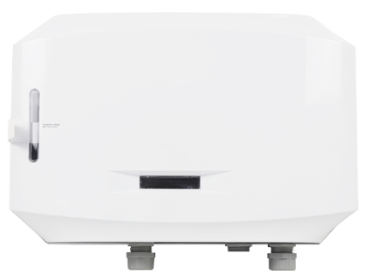
When dealing with an exceptionally soiled load of laundry, one might assume that using extra detergent is the solution. However, the truth is quite the opposite. Overusing detergent happens to be the most prevalent laundry mistake people make. Regrettably, this practice not only squanders money and harms the environment but can also lead to issues with your washing machine.
Washing machines can experience various issues, but fortunately, many of the typical laundry mistakes are entirely avoidable. By steering clear of these errors, you can save money, extend the lifespan of your washer, and contribute to pollution reduction.
The following are the most prevalent laundry errors, yet it's also the simplest to correct:
Among all the laundry mistakes I come across, the most frequent one is the excessive use of detergent. Many individuals tend to fill the soap tray of their front-loading machines right up to the "Full" mark, or for top-load washers, they often add an extra capful or scoop of detergent when dealing with particularly dirty loads.
Utilizing such a generous amount of soap leads to several distinct issues.
As expected, an excessive amount of soap can generate an abundance of soap bubbles, which don't dissipate as readily as water does. When the drain pump struggles to expel these excess bubbles, the motor may accelerate excessively and overheat, resulting in a SUDS or SD error.
In the case of a Whirlpool front-loading washer, this issue can lead to a situation where the door remains locked, and the washer persists in draining until you disconnect it from the power source. This not only results in energy wastage but also places unnecessary strain on your machine.
Fortunately, this issue typically resolves itself as time passes because the soap bubbles naturally dissipate, allowing the pump to expel the excess soap.

The surplus detergent will remain un-rinsed by your washing machine, resulting in residue on your clothing, sheets, and towels. This residue can leave unsightly marks on your laundry, and your clothes may feel unclean, potentially causing skin irritation.
Overusing detergent leads to more frequent depletion, necessitating the purchase of additional detergent that exceeds your actual requirements.
Excessive detergent usage can leave behind a residue in your washer, potentially causing a mold issue. When your washing machine fails to completely rinse away all the soap during each cycle, the excess soap serves as a nourishing substrate for black mold growth.
Mold isn't just visually unappealing. It also imparts an unpleasant odor to your clothing. Moreover, it's not uncommon for individuals to encounter health issues as a result of mold exposure.
Excessive soap usage also has adverse effects on the environment. Although wastewater treatment facilities and septic systems work diligently to eliminate contaminants, the greater the amount of detergent we use, the more there is to be treated and removed. Consequently, using more detergent than necessary raises water treatment expenses for the community and elevates the risk of harmful substances being discharged into the environment.
As an illustration, nitrogen present in detergent can encourage the proliferation of algae when it enters freshwater sources, leading to reduced oxygen levels and detrimental effects on aquatic ecosystems. Additionally, certain components like surfactants, which aid in stain removal, and optical brighteners, which enhance the appearance of whites and light-colored fabrics, can be toxic to both water supplies and marine life.

Ozone laundry, also known as ozone washing, is a laundry technology that uses ozone gas (O3) to clean and disinfect textiles. Here are some of the benefits of ozone laundry:
1. Enhanced Cleaning and Stain Removal: Ozone is a powerful oxidizer that can effectively break down and remove stains, dirt, and bacteria from fabrics. It can be particularly effective in eliminating tough stains and odors.
2. Reduced Chemical Use: Ozone laundry reduces the need for traditional laundry chemicals such as detergents and bleach. This not only saves on chemical costs but also reduces the environmental impact of laundry operations.
3. Shorter Wash Cycles: Ozone can work quickly, which can lead to shorter wash cycles. This can increase the efficiency of laundry operations, allowing for more loads to be processed in less time.
4. Lower Energy Consumption: Ozone laundry systems can operate at lower water temperatures compared to traditional hot water washers. This results in energy savings, as heating water accounts for a significant portion of the energy used in laundry facilities.
5. Extended Fabric Lifespan: Ozone is gentler on fabrics compared to hot water and harsh chemicals. This can help extend the lifespan of textiles, reducing the need for replacement.
6. Disinfection: Ozone is a powerful disinfectant, capable of killing bacteria, viruses, and fungi. This makes it ideal for industries with stringent hygiene requirements, such as healthcare facilities and hotels.
7. Environment-Friendly: Ozone laundry is considered more environmentally friendly because it reduces the use of harsh chemicals and hot water, leading to lower energy consumption and fewer chemical residues in wastewater.
8. Improved Indoor Air Quality: Traditional laundry chemicals can release volatile organic compounds (VOCs) into the air, affecting indoor air quality. Ozone laundry eliminates the need for many of these chemicals, leading to better air quality.
9. Reduced Water Usage: Ozone laundry can reduce water consumption because it often requires fewer rinse cycles to remove detergent residues from textiles.
10. Cost Savings: Over time, the benefits of ozone laundry, such as reduced chemical and energy costs, can lead to significant cost savings for commercial laundry facilities.
Ozone Laundry can benefit your daily laundry from many aspects. Please visit O3EcoLaundry.com or Contact Us to learn more about it.

Green Land Yinghai International Building B,
Baohe District, Hefei,
Anhui, China, 230002
© O₃ Eco Laundry 2024 | Sitemap | Privacy Policy | Terms of Service